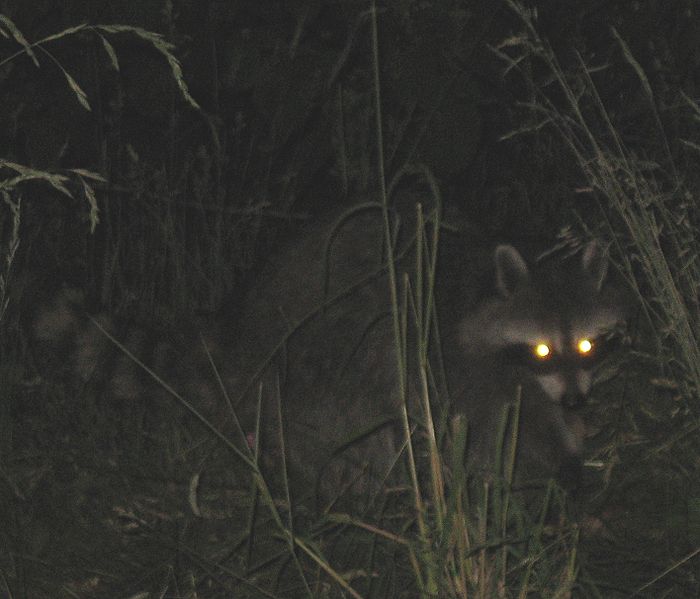
light and color
COS 351 - Computer Vision
building a camera
Let's design a camera!
What do you need to make a camera from scratch?

image formation
Idea 1: put a piece of film in front of an object
- Do we get a reasonable image?

image formation
Idea 1: put a piece of film in front of an object
- Do we get a reasonable image?

image formation
Idea 1: put a piece of film in front of an object
- Do we get a reasonable image?

image formation
Idea 2: add a barrier to block off most of the rays
- this reduces blurring
- the opening known as the aperture

image formation
Idea 2: add a barrier to block off most of the rays
- this reduces blurring
- the opening known as the aperture

pinhole camera

f = focal length
c = center of the camera
camera obscura: the pre-camera
- Known during classical period in China and Greece (e.g., Mo-Ti, China, 470BC to 390BC)


camera obscura used for tracing

accidental cameras
Accidental pinhole and pinspeck cameras revealing the scene outside the picture

accidental cameras
Accidental pinhole and pinspeck cameras revealing the scene outside the picture

pinhole camera apartment

first photograph
Oldest surviving photograph
- took 8 hours on pewter plate


first photograph
Niepce later teamed up with Daguerre, who eventually created Daguerrotypes

image formation
|
|
|
a photon's life choices
|
 |
a photon's life choices
|
 |
a photon's life choices
|
 |
a photon's life choices
|
 |
a photon's life choices
|
 |
a photon's life choices
|
 |
a photon's life choices
|
 |
a photon's life choices
|
 |
a photon's life choices
|
 |
a photon's life choices
|
 |
lambertion reflection
In computer vision, surfaces are often assumed to be ideal diffuse reflectors with no dependence on viewing direction
digital camera

A digital camera replaces film with a sensor array
- each cell in the array is light-sensitive diode that converts photons to electrons
- two common types
- Charge Coupled Device (CCD)
- Complementary Metal-Oxide Semiconductor (CMOS)
- see link for details
sensor array


sampling and quantization

interlace vs progressive scan


motion: progressive scan

motion: interlace

rolling shutter
CMOS captures row at a time


the eye

The human eye is a camera!
- Iris: colored annulus with radial muscles
- Pupil: the hole (aperture) whose size is controlled by the iris
- What's the "film"?
- Photoreceptor cells (rods and cones) in the retina
the retina

what human's don't have: tapetum lucidum



two types of light-sensitive receptors
|
CONES
RODS
|
 |
rod/cone sensitivity

distribution of rods and cones

Night Sky: Why are there more stars off-center?
eye movements
Saccades
- can be consciously controlled, related to perceptual attention
- 200ms to initiation, 20–200ms to carry out. large amplitude
Microsaccades
- involuntary, smaller amplitude, especially evident during prolonged fixation. function debated
Ocular microtremor (OMT)
- Involuntary, high frequency (up to 80Hz), small amplitude
electromagnetic spectrum


visible light
Why do we see light of these wavelengths?
... because that's where the Sun radiates EM energy

the physics of light
Any patch of light can be completely described physically by its spectrum: the number of photons (per time unit) at each wavelength 400–700nm.

the physics of light
Some examples of the spectra of light sources

the physics of light
Some examples of the reflectance spectra of surfaces

the physics of light
There is no simple function description for the perceived color of all lights under all viewing conditions, but...
A helpful constraint: consider only physical spectra with normal distributions

the psychophysical correspondence

the psychophysical correspondence

the psychophysical correspondence

physiology of color vision
Three kinds of cones
- Why are M and L cones so close?
- Why are there 3?

impossible colors
Can you make the cones respond in ways that typical light spectra never would?

tetrachromatism

- Most birds and many other animals have cones for ultraviolet light
- some humans, mostly female, seem to have slight tetrachromatism
more spectra, metamers
Metamers: a color that appears to the eye to be identical to another color but which in fact has a different spectral composition

more spectra, metamers

practical color sensing: bayer grid


Estimate RGB at 'G' cells from neighboring values
color image
 Color image above; red, green, blue channels at right |


 |
images in Matlab
- Images represented as a matrix
- Suppose we have an NxM RGB image called
imim(1,1,1)= top-left pixel value in R-channelim(y,x,b)= y pixels down, x pixels right in the bth channelim(N,M,3)= bottom-right pixel in the B-channel
imread(filename)returns a uint8 image (values 0–255)- convert to double format (values 0–1) with
im2double
- convert to double format (values 0–1) with

color spaces
How can we represent color?

color spaces: RGB

|
 


|
color spaces: HSV
 intuitive color space |
 


|
color spaces: YCbCr
 fast to compute, good for compression, used by TV |
 


|
color spaces: L*a*b*
 "perceptually uniform"* color space |
 


|



most information in intensity
back to grayscale intensity




